This article is part of a series designed to help Airstreamers and prospective owners better understand and utilize their unit’s electrical system. Click here to read other installments in the series.
Futurist and science fiction writer Arthur C. Clarke famously observed that any sufficiently advanced technology is indistinguishable from magic.
That certainly applies to the solar power system in your Airstream, which takes rays of sunlight and turns them into enough electricity to let you adventure far from campground hook-ups. It sure looks like magic, but it’s just leading-edge technology specifically tailored to Airstream travel trailers and touring coaches.
Whether you’ve already harnessed the sun or are considering doing so, the more you know about Airstream’s solar capabilities, the more benefit you can reap from them.
So, let’s pull back the curtain and take a look at the technology behind the… magic.
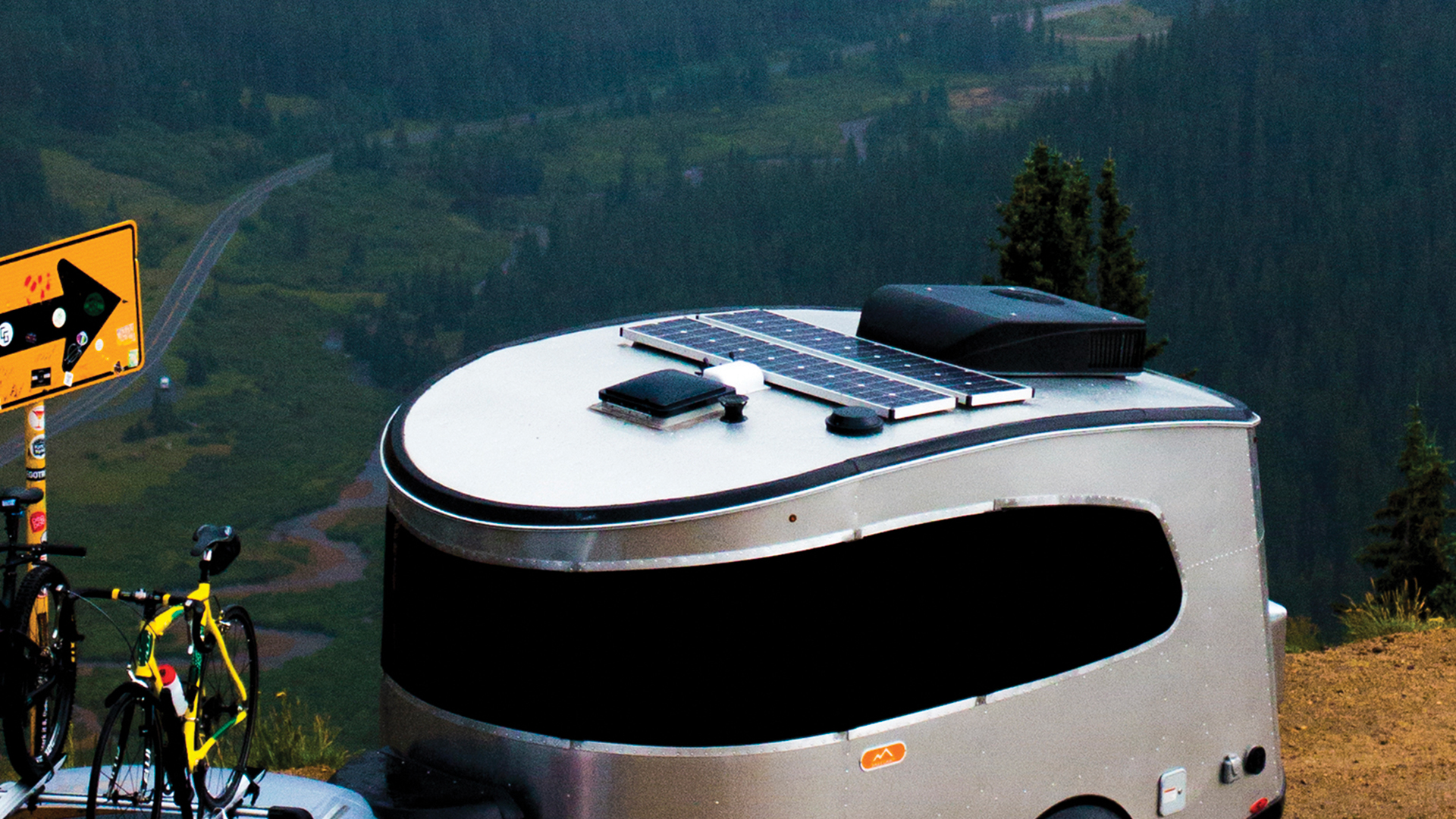
The centerpieces of any solar power system are the solar panels. These modern marvels are collections of photovoltaic cells mounted on the roof or deployed near your unit from a dedicated plug. The panel’s component cells convert sunlight into electricity by creating what’s called an electric field, a place where photons, which are particles of light, can break electrons free from atoms.
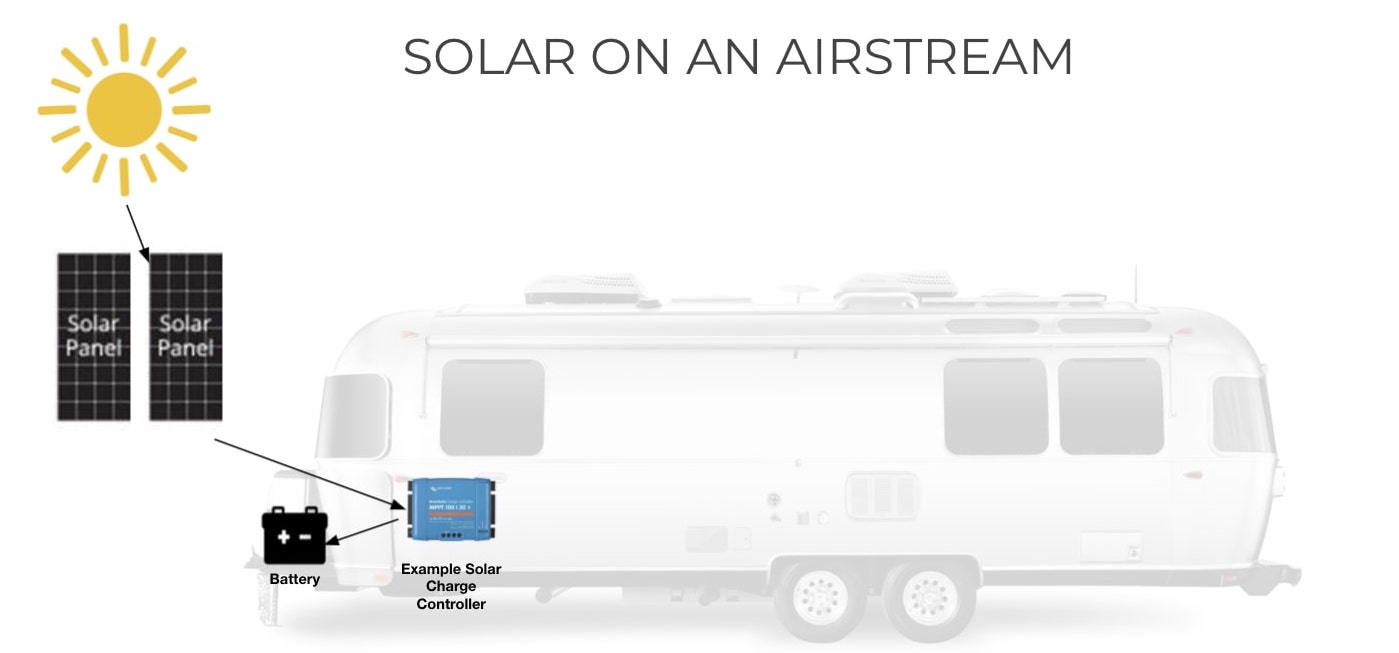
An electric field is formed when opposite charges are separated. This separation is accomplished in the cells by coating the two pieces of silicon with materials that give each a positive or negative electrical charge. The result is an electric field between the two layers of silicon. When a photon of sunlight breaks an electron free, the electric field pushes the electron out of the field, where a metal plate is waiting to collect the released electrons and transfer them to the wiring of your solar system. Just as rainwater from a roof can be directed into collection barrels for later use, the juice that flows down the wires from those rooftop solar panels runs through a solar charge controller and gathers in your Airstream’s batteries.
Airstreams come pre-wired to support up to three roof-mounted solar panels. Travel Trailers ranging from 16' to 23' get the option to add a 90W solar package (1 panel), 25' to 30' models can get 180W installed (2 panels), and top-of-the-line models like Classic and Pottery Barn come standard with 270w (3 panels) of solar power. However, you can add additional panels using aftermarket parts depending on your unit’s available roof space.
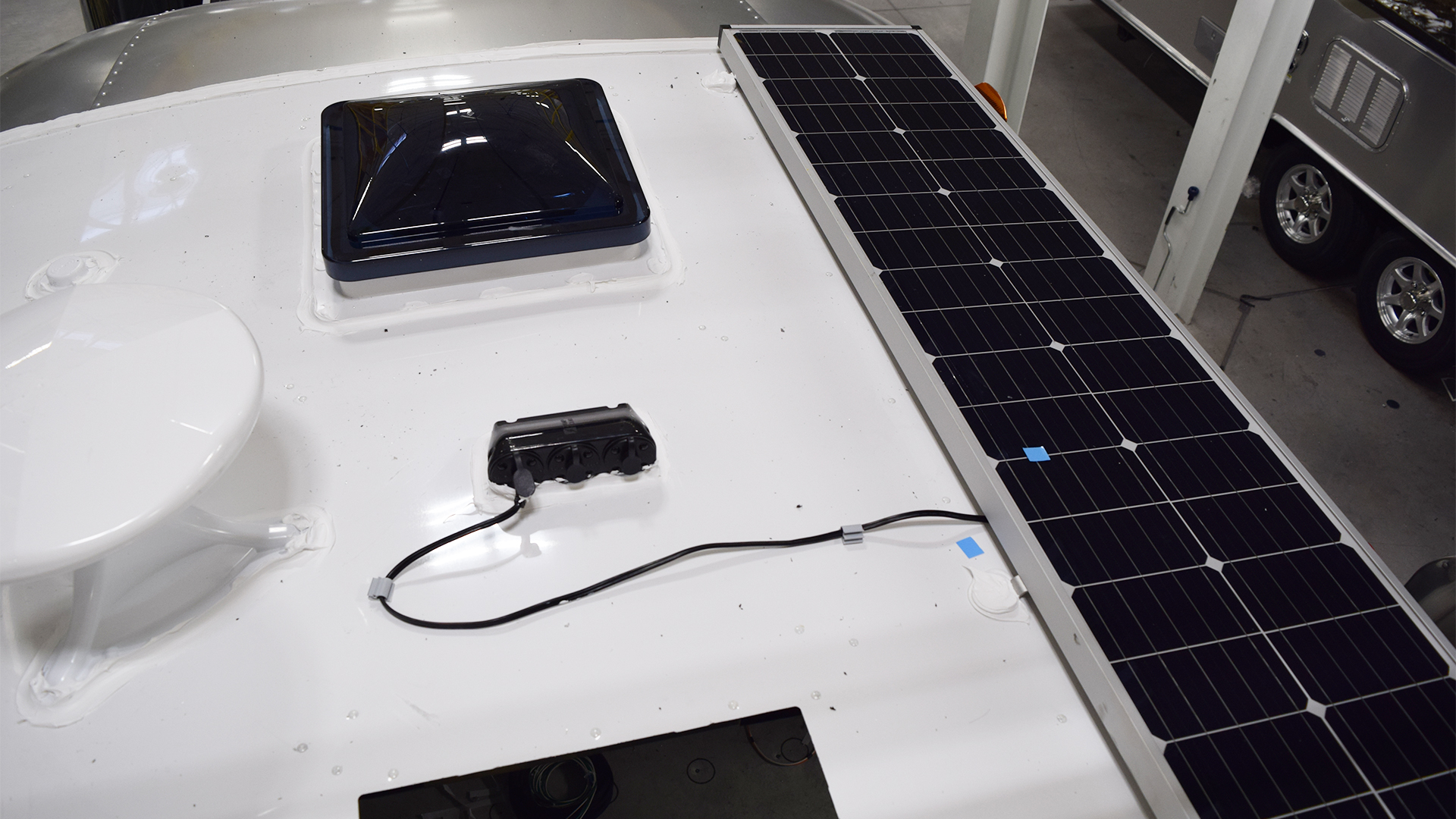
Airstream Interstate 24 and Atlas Touring Coaches are delivered with 400-watts of solar panel power. There are 300W feeding power to the house batteries and a separate, dedicated 100-watt solar panel for the chassis battery. The Interstate 19 includes a 250-watts of solar on the roof.
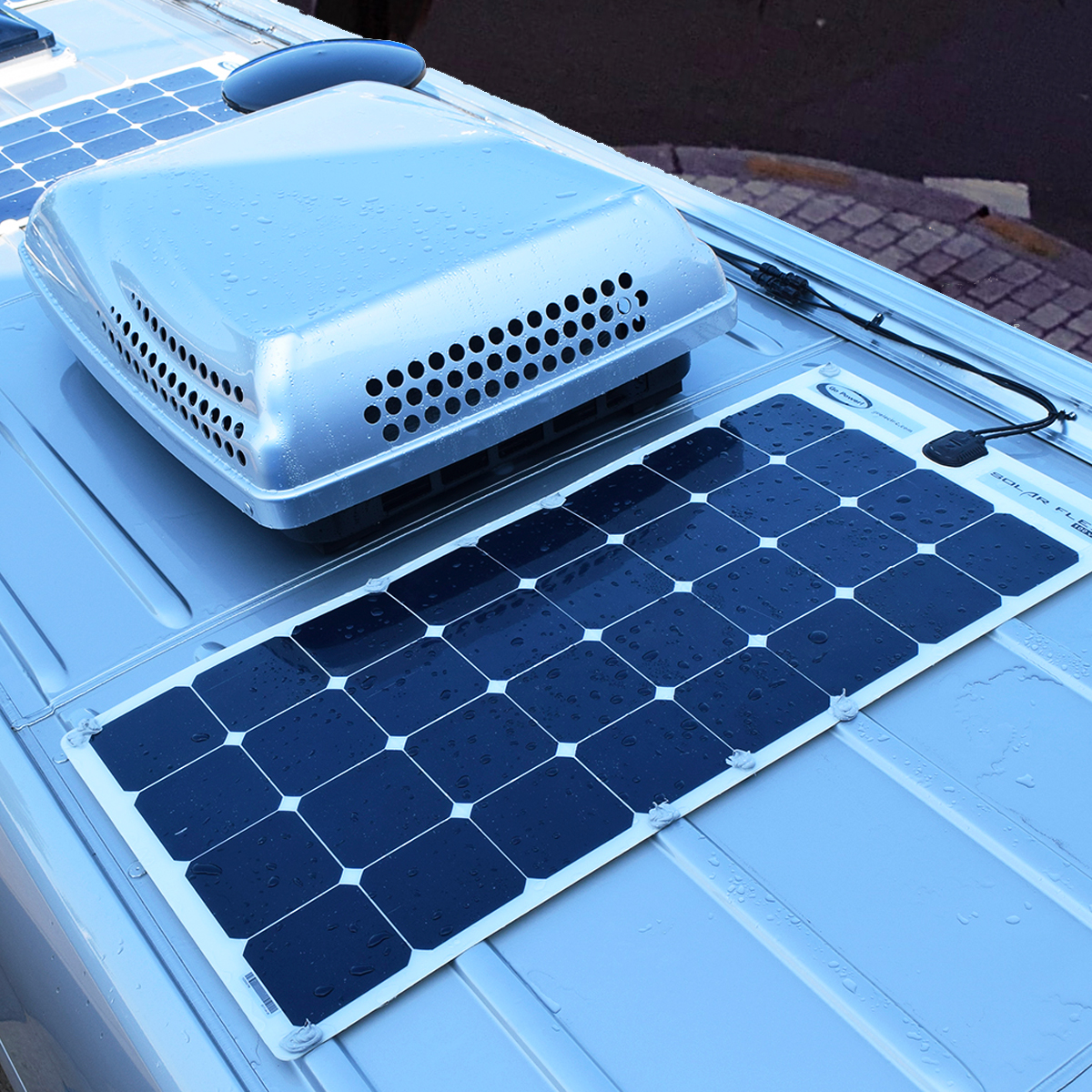
As a rule of thumb, your solar panels will generate electricity for an average of four hours per day on an annual basis. A solar charge controller protects the batteries from being overcharged by disconnecting the solar power feed when it senses that they are fully charged. The control reconnects the system when your battery levels have dropped enough to accept more current.
Your batteries store electricity as DC (direct current) power, which can handle many tasks, such as keeping the lights on, running the ventilation fans, and recharging your USB-powered electronic devices. For bigger chores — running the air conditioning, or using appliances with motors and heating elements, for example — you need AC (alternating current) power. Fortunately, your Airstream’s power inverter can convert the batteries’ DC to AC to run the AC outlets in your Airstream.
If you plan to boondock, it’s imperative to know how much electricity you need to adventure as you wish and how much of that juice your Airstream’s solar power system can deliver. That information can be gathered through an energy audit. Simply list all the systems and electric items (TV, sound system, et cetera) you want to be able to use while off-grid and add up the watts those things consume per hour. You can use that data to determine how much solar output and how many batteries you need to power your untethered adventures.
Your late-model Airstream Travel Trailer (2017 or later) also includes a port at the front end that enables you to connect a portable solar panel. This feature is handy when you are parked in the shade but still need to power up or don't have the solar package option installed and still want to supplement your battery charging from the sun.
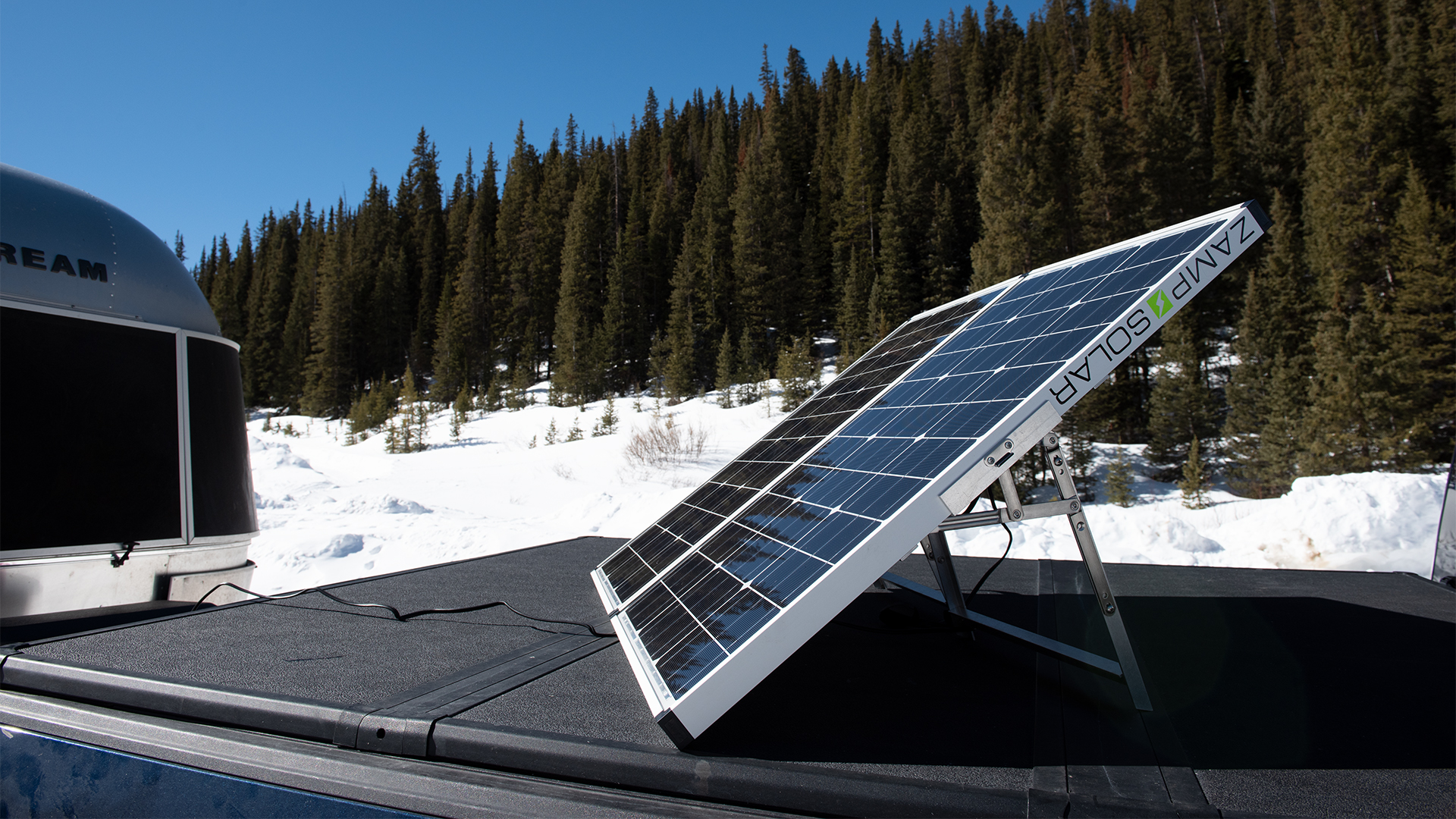
Your choice of house batteries to hold your solar harvest will depend in large part on your lifestyle.
Lithium batteries have 2 to 3 times more usable power (energy density) and have a 100% depth of discharge, meaning that they can be depleted to 0% and then charged back to 100% (when compared to AGM and lead-acid, which are recommended to charge when they reach 50%). Lithium batteries also provide a higher voltage output at the terminals, which remains flat, increasing overall efficiency and performance. Sealed inside each battery is an internal heating element for cold weather charging. Lithium batteries are not safe to charge if the temperature is too low. The heating element will automatically activate if the temperature drops below 25 degrees Fahrenheit.
These little powerhouses are more expensive but last longer than other options — up to 10 years.
A less expensive option compared to lithium batteries is the AGM or Absorbed Glass Mat battery. AGMs require limited maintenance and typically have a longer life than standard lead-acid batteries. However, AGMs should only be discharged to 50% of their capacity, which means you need more AGM than lithium batteries to get the same storage capacity.
Lead-acid batteries are the least expensive option for powering your Airstream, but their water levels must be monitored regularly, and they have a shorter life than lithium or AGM batteries. That said, lead-acid batteries offer affordable, reliable power for Airstreamers who spend most of their outdoor time in campgrounds and other locations that provide shore power.
For more information about Airstream’s solar power system, check out Airstream Academy. This comprehensive knowledge base is jam-packed with answers and information about every aspect of operating and maintaining an Airstream Travel Trailer or Touring Coach.
Visit our help center for quick answers and support.









